|
Interviewed by Cathy Horn
KHPB was recently contacted by Hyde Park resident Osasenaga Idahor, a high school student hoping to get feedback on the Conscious Waste Decision project he’s working on for school. A couple of us met with him at Coffee Break Cafe and we were so impressed by his ideas, commitment, enthusiasm, and confidence that we decided on the spot to interview him for this Humans of Hyde Park feature. Osasenaga is eager to move his project forward and is looking for partners in the community. If you have feedback, ideas, or assistance you would like to share with him, please email us or comment here. 1. Tell us about yourself and your connection to Hyde Park. I have lived in Hyde Park near Cleary Square my entire life, and as I grow up, I continue to see myself connected to Hyde Park. Hyde Park is a special place for me because I feel more responsible as I grow up to give back to the small town in the city. I understand that I have an obligation to make my community a better place, for now, and for the future. Since my days in middle school, I always wanted to become someone whom others would respect for making a positive impact. I just did not know how, and I never realized that I could do so in Hyde Park, until now. 2. Tell us about the project you’re working on, and your goals for that project. This past summer I visited Tokyo, Japan and I discovered that there were no public trash bins on the main streets, and yet there was not one piece of trash on any of the sidewalks or roads. In Tokyo, it is expected that anyone passing by on the street would hold on to their trash until they enter a building. When they enter the building, they could choose to recycle or throw it into the general trash bin. The discovery inspired me to begin thinking of how I could start changing people’s mindset about public waste receptacles here in Boston. I gathered my thoughts about how I could use existing trash bins to change the way people think before throwing away waste in these bins. Once I found out about Boston’s plans to be a zero-waste city by 2050, I knew how I could make my project’s ideas relevant to everyone living in Boston. Even when I told people in my school’s own environmental club about zero-waste Boston, no one knew that the initiative had been set in place. Thus, I decided to motivate people to consider the environmental consequences of throwing away their waste in public trash bins by increasing awareness about the zero-waste Boston initiative. The only way we get to zero-waste by 2050 is if we all remember to think before we throw out our waste. There need to be more collaborative community-led projects to support our zero-waste plans as a city. The Conscious Waste Decision project is all about how together we can make Hyde Park and other neighborhoods in Boston model neighborhoods for the others by having this community-led project. The zero-waste plan is amazingly ambitious and it cannot be realized unless we help our city stay on track with its benchmarks. Most people know why they should recycle on a basic level, but it is important that we also keep in mind why it is directly relevant to us to want to recycle each time. It's not just about global consequences - there are more direct, local consequences as well for every decision we make about waste. My goals for the Conscious Waste Decision project are to increase the amount of recycling in public trash bins while decreasing the amount of waste thrown into the landfill bins. Another goal is to increase public awareness about the relevant part everyone plays in making necessary steps for our city's zero-waste 2050 plans to become a reality. The project uses labels and signs visible on public trash bins to help achieve these goals. My vision for the project is a youth-led collaboration making these labels to demonstrate our capability as Boston residents in realizing our city's plans. 3. How did you get the idea for your project? What inspired you? I am a member of my school's Youth Climate Action Network (YouthCAN). This past May, YouthCAN hosted its annual summit at MIT where the focus was Facing Waste. The focus really prepared my thinking for this project. This summer, I attended the Global Citizens Initiative Summit in Japan where I developed my project and established the idea of using labels to encourage awareness about the 2050 zero-waste Boston plans. I met with 27 other fellows from around the world and mentors who gave the advice to promote this plan of action. I gained more inspiration in my visit to the BlueCross BlueShield center in Boston. While there, I found out about how they label their trash bins 'landfill' bins. It inspired me to change people's perspectives on the trash we produce and to promote a more sustainable matter. 4. How do you think we can get more teens and kids interested and involved in keeping Hyde Park clean, green, and beautiful? The easiest way to garner youth climate action and draw people into the cause is by creating a welcoming, judgment-free event where anyone, regardless of their knowledge about climate change, can discuss their concerns about it and think of potential sustainable responses. When people become aware of the imminent threat of climate change, only informing them of the terrifying threats posed by climate change and making them feel guilty about their unsustainable lifestyle decisions is a tactic that makes people shy away from doing any action. People are drawn into advocating for sustainable cities and communities when they are given hope to try to fix our predicament and a way to advocate. Impressing despair and guilt only encourages inaction and feelings of futility. Many teens are concerned about the effects of climate change, it is a matter of galvanizing them with hope to pursue active advocacy. In Hyde Park, there needs to be a revived climate action group for youth. Pushing forward Boson's zero-waste plans of 2050 requires a youth- involved team. The Conscious Waste Decision is a project led by the youth who will have inherited the city by 2050, and as the young inheritors, we have the greatest reason to support the initiative. Hyde Park teens can utilize gathering places, like the Menino YMCA teen center or the Municipal Building, even local bus stops as places to keep our city clean. The judgment-free environment and the collaboration will foster strong ideas and the willingness to follow through with the task of promoting a zero-waste Boston. _________________________________________________________ Nominate yourself or someone in the community for a Humans of Hyde Park story; nominees can remain anonymous in the story or use their first name only if they prefer: https://goo.gl/forms/qgTj1Rh8t2bSbh973
1 Comment
Written by Joseph Smith, a founding member of KHPB and longtime Hyde Park resident. He can be found around Hyde Park in our community meetings, participating in clean up activities and leading walks; he is especially active in his role as leader of FHNA (Fairmount Hill Neighborhood Association). For this month’s Humans of Hyde Park story, we feature Robin Texeria, the property manager of Blake Estates on Hyde Park Avenue. Robin, a Mattapan resident, has been at this Beacon Communities site since 2014. The senior citizens’ facility was built in 1980-81 and houses 300 residents whose ages range from 62 to 99 years old. Since Robin’s arrival, there have been ongoing renovations and upgrades to the property inside and out. The public’s view of the landscaping is what originally brought KHPB to support and praise the site. However, there is much more to see that is not visible from the street. Robin personally oversees the manicured grounds and is directly involved in the choice of flowers and the location of all the beautiful planters that dot the property. She talked of transitioning the planters from spring and summer plants to fall flowers later this week. She believes that the look of the property is one of the most important aspects of providing a positive living experience. With 254 one bedroom and 9 two bedroom apartments, she has her hands full, but her energy, creativity and passion prevail. Luckily, she also has a great team working with her and they all take pride in what they do.
The interiors are all newly painted since Robin’s arrival. Additionally, there are new bathrooms, rugs, signage and landscaping. The site also has a wellness center, a computer and fitness center, and offers all sorts of age appropriate programs for its seniors. There is a welcoming interior courtyard with outside seating which is a pleasant getaway from Hyde Park’s busy traffic and noise. The site sits on a pristine portion of historic Mother Brook which provides a peaceful setting with the soft bubbling sound of the moving water. This is the perfect site in Hyde Park to meditate and enjoy nature. While we were walking the property, a senior came up to Robin and asked if he could research and plant some hummingbird friendly plants along the brook. He had only seen three hummingbirds in his life and wanted plantings to encourage them to come to Blake Estates. Robin is totally approachable by seniors and staff and was very supportive and encouraging of the planting idea. Blake Estates is a beautiful, well-maintained community. It is a bright star in its Hyde Park Avenue location. Robin says that she loves what she does. Clearly, her love translates into a very beautiful and positive living experience for our deserving senior population. __________________________________________________________ Nominate yourself or someone in the community for a Humans of Hyde Park story; nominees can remain anonymous in the story or use their first name only if they prefer: https://goo.gl/forms/qgTj1Rh8t2bSbh973 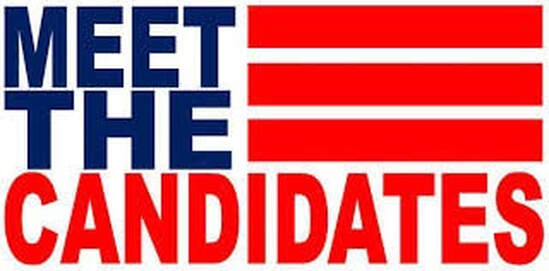 The following 4 questions were sent to all Boston City Councilor District 5 candidates with the option to answer some or all of them. The candidates' responses are unedited. Additional responses will be added as they are received. This is not an endorsement of any specific candidate. Responses have been uploaded as images; please expand to best view the text. District 5 Candidates: Ricardo Arroyo- No answers submitted Maria Esdale Farrell Cecily Graham Yves Mary Jean- No answers submitted Justin Murad Alkia Powell Jean-Claude Sanon - No answers submitted Mimi Turchinetz 1) With programs like Greenovate and ZeroWaste Boston, the City of Boston is striving to be a model of climate action, sustainability, and elimination of pollution. What could we do to make Hyde Park a model to other Boston neighborhoods? How would you help achieve these goals as District 5 Councilor? Maria Esdale Farrell: The City of Boston’s Greenovate program strives to educate residents about the impact of climate change and what each of us can do in response. While much of the attention around climate change centers on coastal communities, climate change is also having a profound impact on rivers, lakes, ponds, and wetland areas. With the Neponset River flowing through Hyde Park and Mattapan, with places like Turtle Pond, District 5 should be deeply invested in these issues and as District Councilor, I would strive to have more residents undergo leadership training, and in turn train more residents than any other district in Boston. Similarly, with a goal of dramatically reducing waste and protecting our natural areas, as District Councilor I will work with schools, residents, community programs and businesses to increase opportunities regarding education and participation in efforts such as environmental campaigns, composting, reducing food waste, and recycling streams for textiles. Promoting green policies and practices among local businesses is an especially good way to achieve these goals more quickly, while educating consumers, and promoting local businesses as leaders deserving of our patronage and support. Thinking outside the box we could provide out of classroom natural education opportunities which would increase awareness and a love for nature and the natural local resources that surround us in District 5. Cecily Graham: As a city councilor I would achieve these goals, making Hyde Park a model to other neighborhoods by:
Alkia Powell: Primarily, I would work with the Boston City Council Environment and Safety Committee to reopen the web pages for Greenovate and ZeroWaste Boston to once again provide these resources to citizens. Additionally, I would work with the community to increase education about the pressing issue of climate change, and actively encourage the growth of our local recycling programs. Further, I would advocate for increased sidewalks and bike lanes, working towards lowering the overall emissions within the community. This has been a lifelong passion. Mimi Turchinetz: I believe that not only can we make Hyde Park a model for other Boston neighborhoods, but given the increasing urgency of the climate crisis, we are morally obligated to develop creative programs and strategies in District 5 that can be scaled up and implemented across the city and beyond. As a city we should look to address a wide range of issues through the lens of addressing climate change. I was the founder and outgoing president of the Southwest Boston Community Development Corporation and we developed a program known as the Green Team, which provides summer jobs to a small number of Boston youth, providing them with job readiness skills, environmental stewardship, landscaping and other skills to allow them to explore the environmental field and become environmental activists. As your City Councilor I would expand this model to create a pilot program that combines skill development and career training in green industries and community engagement, working in an intergenerational way with seniors, assisting them with resources and addressing isolation. As the climate crisis worsens the demand for skilled workers in green industries will increase. I will provide opportunity for youth of Boston to have the training and career development to step into green industries jobs. I will ensure racial and economic equity as our city strives to confront climate change. Everyone should have access to the tools and resources necessary to join in the fight. This includes expanding environmental programs, for example solar panel incentives, so that they are accessible to all residents, homeowners and renters. We also must ensure that all new development is built with Net-Zero or passive house standards while creating incentives to retro-fit existing construction to increase sustainability and eliminate pollution. 2) Litter is a huge problem in Hyde Park, and throughout Boston. What would you do to tackle this issue and to create/promote litter prevention, education, and enforcement policies and practices in District 5? Maria Esdale Farrell: Creating a common, shared standard is critical, therefore litter reduction and eradication begins with public outreach and education of residents, students , businesses, and visitors to our neighborhoods and business districts. The use of data to identify litter “hotspots” – the location, timing and nature of the trash. This info can also be enormously useful in educating us as to necessary and most effective next steps in particular, advocating for Boston Public Works to assign a full time maintenance team in District 5. Strict enforcement should be a last resort, but where individuals or businesses are unwilling to alter behavior, it becomes a necessary one. I’d also like to explore the possibilities of piloting a community service program partnering with various organizations such as Work, Inc. as well as creating a Community Service Program for City of Boston employees and students to encourage and model positive citizen behavior. Cecily Graham: I would promote more community engagement in our schools/after school programs that inform students of the effects of littering and pollution. There are a vast number of students and residents who want to help the community but need more accessible programs to do so. In addition, I would have our business take a pledge to do their part with litter prevention, sign it and put it up in their businesses to encourage their customers to adhere to the existing no littering policy. This would drastically help eliminate littering around local shops. In order to enforce litter prevention I also would request a higher penalty for civil tickets, especially for repeat offenders. Justin Murad: Hyde Park residents have been noticing a the issue of litter throughout their streets and neighborhoods and have been very vocal about it. My way of tackling this issue as a City Councilor would be to install more trash barrels in heavily populated neighborhoods. I feel that if there are more barrels available, then people would be more willing to throw it in a barrel then on the street. I would also endorse, advocate and supply resources to groups that make it their goal to keep their neighborhood clean because it is their hard work and willingness to make it cleaner is the example we all should follow. Alkia Powell: To decrease the amount of litter within District 5, I would advocate for increased trash and recycling outposts throughout, and growth of our local recycling programs. As well, I would advocate for a community composting center and community composting education to decrease the amount of trash, while in turn creating a valuable resource for growth. Lastly, I would work with community organizations to increase the availability of information and education on climate change, recycling, and the effects of litter to combat the problem on an individual level. Mimi Turchinetz: The disparity in overall maintenance across the neighborhoods in District 5 is striking, however the whole district is quite dirty. I would work on behalf of all neighborhoods to reduce litter. As City Councilor, I would ensure that we adequately and equitably fund the cleaning of our streets, parks and open spaces. Volunteer teams are great, but should not be responsible for keeping our neighborhoods clean! Additionally, many of the open spaces and parks are owned and operated by DCR, not the city, therefore we must collaborate fully with the state, both DCR and our elected partners in state government, to address this problem. Additionally, in speaking with residents of Mattapan about how to address public safety, the lack of programmatic opportunities is repeatedly raised, along with a frustration about the lack of movement to address this issue. Let us use this as an opportunity to take concrete steps forward on two issues of concern within our District. My Green Team pilot would provide paid opportunities for young residents year round, while fostering a sense of shared responsibility and pride. This pilot could also be an opportunity to invest in our residents beyond providing summer jobs, by incorporating practical skill training in partnership with local unions and Madison Park Technical High School as well as the creative training program, The People’s Academy. 3) Hyde Park’s public spaces and parks fall under different jurisdictions such as DCR, City of Boston, the MBTA, and the Department of Transportation. It is hard to know who is responsible for different areas, what they do to maintain their properties, and how residents can address issues and abdication of responsibility. What do you think should be done to address these issues? What would you do as a District 5 Councilor? Maria Esdale Farrell: It’s important that state and quasi-public agencies operating in our communities act as good neighbors. There are several simple strategies that would make it easier for residents to know which agencies have jurisdiction over certain roadways and properties. Improved signage is one. Color-coded online smart maps and listings are another, so that when residents identify a problem or report a complaint, they are automatically informed of the jurisdiction and, so as not to force residents to navigate a labyrinth of government agencies, the complaint should be automatically shared not only with the District Councilor, but the correct state agency as well. As District Councilor, I intend to bring these various city, state and quasi-public agencies together on an ongoing basis to ensure that complaints are taken seriously and given proper attention. I would advocate for a Community Liaison for Public Safety and Maintenance at the state/local level. Cecily Graham: As a city councilor I would host quarterly community meetings including representatives from each of these institutions to not only clarify who is responsible for what, but to map out a plan on how to prioritize the upkeep of these spaces. This should not be a guessing game. Alkia Powell: As a Boston City Councillor, I would collaborate with other officials and agencies to push for action regarding Hyde Park’s public spaces. I would be a fierce advocate for my constituents and their concerns, making sure they are heard by those at the top. Additionally, I would work towards creating a streamlined process for citizens to voice their concerns themselves without having to navigate through different jurisdictions. With the collaboration of other agencies, I believe Hyde Park is in a prime position to be the model for Boston’s Greenovate Initiative to show the lead of our neighboring villages. Mimi Turchinetz: Residents should not need a thorough understanding of municipal jurisdiction law to ensure their neighborhood is well maintained. If you elect me as your City Councilor, I will not abdicate the responsibility for keeping community spaces clean and I will work with our partners in government to develop systems within my office to ensure timely responses to these issues. Out of the candidates in this race I am uniquely qualified to navigate the overlapping jurisdictions to ensure out public spaces and parks are fully maintained. I have experience working across all three branches of government, on both the state and city levels and outside of the formal government structure as a private citizen and leader of a CDC. In every instance I have successfully built the coalitions necessary to create meaningful results. Residents need a single point of contact to report property maintenance problems, and as City Councilor my office could fill that role. 4) What improvements need to happen to make Hyde Park’s business district more attractive, welcoming, and vibrant? How can you be a partner is these improvements? Maria Esdale Farrell: Hyde Park has struggled for decades to have a common vision, cohesive plan and collaboration amongst all the incredible community organizations that currently exist. We need one common goal and one “team” to provide a pathway be able to support initiatives and host conversations in the community while partnering with our wonderful Mainstreets, Hyde Park Board of Trade, local business owners, landlords, and the Hyde Park Neighborhood Association so there is constant communication with local businesses and residents. This is crucial in determining what residents want from their community and in their business districts; what businesses feel would be the most helpful additions to boost business; and alteration to reduce barriers to business. Hyde Park’s major business district in both Cleary and Logan Square, is anchored by incredible cultural institutions - the Riverside Theatre, the Menino branch library and the Menino Arts Center, the YMCA, the potential of the Everett Theater. Hyde Park also has a rich legacy, particularly around Black History, that should be talked about much more, and more closely tied into Hyde Park’s social, cultural, and economic identity (which is a real possibility with one of the William Barton Rogers latest proposals). The potential opportunities here are enormous. I would also advocate for capital investments to either build or repurpose city property to have a central Community Common. As District Councilor, I intend to make this a signature effort – to attract new development and investment to highlight this incredible history and bring more visitors to Hyde Park and its businesses. Cecily Graham: Our town is rich with cultural diversity. As a result, our businesses reflect that diversity. As we know our city awarded less than 1% of our small business grants ($665 million) to women and minority-owned businesses. I would advocate for more equity in this area to help with signage, maybe exploring ways to make a uniform look for shopfronts and encouraging more engagement with our neighborhood mainstreets. In addition, by pushing for more equity in this area, businesses would be able to hire more employees to help them with upkeep. Last but not least, I would encourage more diversity in business options by advocating to fund our neighborhood theaters and bringing in more destination locations that would attract residents to frequent our stores rather than having to leave the district for that purpose. Justin Murad: The business areas of Hyde Park are in desperate need of a revitalization. With broken buildings vacant spaces, businesses cannot thrive. As a City Councilor, I would advocate for better upkeep of buildings by offering programs and resources needed to make sure that they are what the business owners dreamed their store would look like. I would also make sure there are plenty trash and recycle barrels through the populated business areas so trash and debris does not build up on store fronts. I would also improve the sidewalks and roadways leading to and in front of stores because that too applies to the curb appeal of a business. Alkia Powell: Currently, Hyde Park’s business district is seeing a lot of change and growth. As a City Councillor, I would advocate for more “community center” businesses, such as restaurants and coffee shops, creating a more welcoming community environment. As well, I would work towards creating more green spaces and floral adornments in the downtown area. Mimi Turchinetz: You can expect my leadership on economic development to be bold. Currently, there is limited money and capital in our neighborhoods available in our retail districts. I will work to change that. I will create a Financial Opportunity Center in the District to bring access to capital and loan products for sole proprietors and entrepreneurs, job training and access to living wage and union jobs, year round financial coaching, credit building and free tax preparation. Working with key partners I will help build capacity, obtain funding and develop and implement strategies so our communities can thrive. There is no excuse for the inequity that has been the norm with Boston’s city contracts – I will make sure there’s a significant change to how Boston does business by making sure women and minority owned businesses have real access to city contracts. The preliminary municipal District 5 election is on Tuesday, September 24, 2019 and the municipal election is on Tuesday, November 5, 2019.
Interviewed by Amber Hoey
Lexica (Lexi) Taylor has lived in Hyde Park her whole life and her family has been here for five generations. She is a 9th grade student at Boston Latin Academy, and in her free time she participates in events and plays at Riverside Theatre Works, and works part-time at We Grow Microgreens in Readville. We Grow Microgreens is an urban farm that specializes in growing highly nutritious microgreens and edible flowers using organic and sustainable growing practices. Lexi learned about We Grow Microgreens at the Dedham Farmers Market, and she emailed them to offer her help. Since then she has worked with them on projects such as picking up trash at the worksite and cutting flowers and greens for market. She also represents We Grow Microgreens at local farmer’s markets. Lexi’s interest in environmental preservation goes back to 8th grade when she did school projects on the environment and zero waste. Her final project for school had to involve helping the environment, and her topic was repurposing trash. She took this interest further when she signed up to volunteer with Keep Hyde Park Beautiful (KHPB) after seeing the group’s Facebook post about the HP150 Family Fun Day event at Kelly Field. Lexi worked in the KHPB booth, helping kids make environmentally friendly seed bombs and bird feeders. Later that year she volunteered with KHPB again at the HP150 Arts Festival, helping kids make ink roller prints with anti-littering messages. After she graduates from high school, Lexi would like to pursue a career in film and documentaries, and she hopes to use that platform to raise awareness about environmental issues. She is also interested in environmental science studies. When asked how we can get more teens and kids interested and involved in keeping Hyde Park clean, green and beautiful, Lexi said we should try to create more of a connection to area schools, and host more fun events/activities at Kelly field, Logan Square, or any of our community parks. She would also like to see a farmer’s market in Hyde Park. Lexi believes Hyde Park needs more events geared towards kids and teens, and those events could have an environmental focus or component. Keep Hyde Park Beautiful can be more successful spreading the word about environmental matters by getting kids engaged and involved in a fun activity/event. __________________________________________________________ Nominate yourself or someone in the community for a Humans of Hyde Park story; nominees can remain anonymous in the story or use their first name only if they prefer: https://goo.gl/forms/qgTj1Rh8t2bSbh973 This month’s feature reveals a special art partnership between Hyde Park neighbors Mary Hogan and Jen Gaman. We recently sat down at Coffee Break Cafe to discuss how it came about. Introduce yourselves!: Mary: I’ve lived in Hyde Park for about 30 years and I walk a lot. About 20 years ago I started picking up pieces of metal that I saw on the sidewalk and lo and behold I began seeing faces and things that could be made out of them, and I just started doing crafts. Now that I’m retired I can work on it more! Jen: I’ve been in Hyde Park for about 4 years, and I got into this because of Mary. We first met at the Keep Hyde Park Beautiful Yard Sale, but I wanted to be her friend before because of her yard with all the cool art out front. It was pretty exciting to realize she was the woman with the cool house and then we found out we had trash picked the same pile: she had taken this really cool old rocking chair, and I had taken a vintage typewriter in the original carry case and all this amazing stuff was just sitting on the sidewalk on trash day. Mary: It used to happen a lot more often when there were elderly people leaving the community and the kids didn’t want their things so they’d just put them out on the sidewalk and we’d say, “Ooooh this is great!” Jen: Mary started telling me more about her art and said, “Ooooh I wanna make shadow boxes; let’s make shadow boxes together!” and I said, “Sure OK why not!” She empowered me to start picking things up from the sidewalk. I remember the first day I sent her a picture all proud, “Look! Look! I picked up 3 tile spacers today and a bouncy rubber eyeball” and she was like, “Good job, Jen!” We still haven’t made any shadow boxes after all this time! It’s an outstanding project, but I can’t even count the number of times we send each other messages on Facebook: “Look what I found,!” “Look what I did?,” “What should I do here?” It’s been nice to have somebody encourage my creativity. Do either of you have a professional arts background? Mary: I used to be a 4th teacher and I loved to do crafts with the kids, but I don’t have an artistic background. This is all learned! I took a course in welding at Keefe Tech. Before when I had the metal pieces I was screwing them together, using magnets, glue... then I saw this welding course. It was fun! So I did that and bought a little welder, and I weld down in my cellar. I’ve been welding about 8-10 years now. I have thousands of pieces of metal. People started giving me metal too - they started dropping them off on the porch. How would you describe your style? I noticed you used lottery tickets in your art. Mary: Basic I’m just mostly doing faces, masks and people. The lottery tickets was Jen’s idea! I had the idea to use the cans - just to use/recycle the trash cause you see so much of it. Jen: Well we worked on it together. It was a back and forth trying to figure stuff out. Eventually we figured out how to cut the shapes out of the cans...I don’t have an art background at all; I took a history of art and music class in high school, and I really regret not taking art history in college. I found this great coffee table book of Grandma Moses’ paintings, and I started to realize I really like folk art; it was the hook to make me realize there’s all this other kind of art you don’t learn about in school. There’s folk art, there’s outsider art - that’s really interesting to me! So I guess I kind of make outsider art.* [*Outsider art is a bit of a catch-all term for art that falls outside of the scope of traditional art.] Where do you find inspiration? Jen: Sometimes I do Google Image searches, but I’m mostly in my head. Mary’s a good person to bounce things off of. What is your collaboration dynamic? Is this something others can do? Jen: Mary and I both pick stuff up from the street, but we each have different ways of making art. I can’t make what Mary makes, but it’s great to have a forum to share what I’m working on. I would love to see what other people think to create and what comes out of their heads. How do you know when a project is done; how much time do spend on your art? Jen: It’s good to work when you’re inspired. There’s a discipline to it. You’re supposed to work on it everyday, but I haven’t really been doing that. I wish I had more time. Mary: I’m constantly thinking about it! I want to finish this piece, I want to work on this… Jen: I get inspiration from the things I find; I have a lot of pieces that I sit with and think about. I ask, “Why am I drawn to this and not that.” Mary: I love the faces that I see. Jen: There’s actually a name for that! Mary: I’ve been seeing faces in objects since I was a kid. [After the interview I looked it up and found that it’s called “pareidolia” - a psychological phenomenon that causes people to see patterns in a random stimulus.] Do you share your art?
Jen: I post a lot of things on Facebook. I’ve received positive, encouraging comments and others who say, “You have a lot of time on your hands.” Mary: I don’t think people appreciate that it’s all found art that you’re creating! What role do environmental concerns play in your art? Jen: I don’t have any delusions that, “Oh I’ve picked these things up and I’m making art, therefore I’m saving the environment.” I’m not picking up even a grain of sand in the ocean of trash, but I’ve noticed I’ve started buying less and less brand new stuff and asking more and more, “What I can salvage? What can I reuse? What can I buy second hand?” Art supplies, first of all, they’re expensive and second of all, everything is very sterile, but when you find something on the street there’s so much patina and wear and interesting shapes that you can’t just walk into a craft store and find that. There’s certain things at a craft store that are useful, but it’s all kind of uniform. I like things that are not uniform. Mary: I do too! Do you foresee selling or showing your art? Mary: I have a little show at the Dedham library. That’s nice! Someone there did want a dog art piece I made. The thing is I hang mine up at home, but I don’t think the average person would put a car part up on their wall! Jen: I would hang it up!...I recently made a handmaid and a friend was interested in it so I promised it to her. I’m more than happy if someone likes something to just give it to them. __________________________________________________________ Nominate yourself or someone in the community for a Humans of Hyde Park story; nominees can remain anonymous in the story or use their first name only if they prefer: https://goo.gl/forms/qgTj1Rh8t2bSbh973 Interviewed by: Cathy Horn
With the Hyde Park: Then & Now Facebook page he created in 2016, Steve Morris is helping keep Hyde Park beautiful by building a sense of community pride around its rich history. By giving everyone an opportunity to share photos, memories, and information on the forum, Steve is expanding the scope of what is known about Hyde Park’s past, and making it easily accessible to anyone who is interested. Steve is also actively working to obtain historical markers for a couple of key locations that have been forgotten to time. What is your connection to Hyde Park? I was born on Huntington Avenue and grew up with grandparents who were very much a part of Hyde Park in its early years. As a child they would tell me stories about early Hyde Park. My Grandmother used to talk about the first house in Hyde Park in the vicinity of Wood Avenue and River Street (Robert Stanton 1668) and how during the revolutionary war, George Washington came to that area (considered Dorchester at that time) to cut down trees and tar them to look like cannons, all to assist in fooling the British that we had more cannons than we actually did, which resulted in Evacuation Day from Boston Harbor. My family surname was Gerry and I was told that I was related to Elbridge Gerry, who was the 9th governor of Massachusetts, a part of the XYZ Affair with John Hancock and Thomas Jefferson, and the last signer of the Declaration of Independence. The Gerrys were prevalent in Hyde Park. Charles Gerry was the first president of the Hyde Park YMCA and was also one of three who founded and established the Hyde Park Savings Bank along with Henry Grew. The Gerry Estate also sold many acres of land to Father Barry, the first pastor of Most Precious Blood, to establish land for the church and several parochial schools in Hyde Park. My family was well seeded in Hyde Park and I feel, no matter where I go in life, I will always consider Hyde Park my hometown. How and why did you start the Hyde Park:Then & Now Facebook page? As I got older, I became very interested in researching the Gerry family and trying to prove the relationship of my family to that of the signer of the Declaration of Independence, Elbridge Gerry. While I was doing this research, I kept finding information on the fledgling town of Hyde Park, uncovering lots of old pictures and great stories about the town from its early beginnings in Fairmount to its development in Readville, Sunnyside, Corriganville, Stonybrook, Cleary Square and from Mattapan, Dedham, Roslindale and Dorchester. It was almost like finding gold. I began creating my own library of photos, hyperlinks, articles and resources. I also created a network of professional resources, people that I can call to confirm stories. My Dad gave me the idea of creating something on Facebook (2016) to allow people to marvel at the older pictures and articles of Hyde Park. I created the Hyde Park: Then & Now (HPTN) Facebook page as an outlet for Hyde Parkers and interested parties anywhere to view pictures, stories, and articles, and to join in discussions with other members. The site grew very fast and had thousands of members within a very short period of time, people who had similar family memories with photos and articles. How do you think it contributes to the beauty of Hyde Park? Hyde Park: Then & Now brings Hyde Parkers together in many ways. It provides access to all five senses and brings a level of education to the town. I spoke before the Hyde Park Historical Society on April 21st, 2018 and Weldon Hall was packed with people seeking the beauty and knowledge of Hyde Park back in the days of old as well as an opportunity to share memories of their childhood. This presentation was done in conjunction with Hyde Park 150. Everywhere I go in Hyde Park, people make it a point to tell me that they enjoy the Facebook page and will even talk about specific research that they loved. The page does not allow advertising, sales of any kind, foul language or any forms of hate or violence. I think people appreciate a place where they can just share their memories and be Hyde Parkers. I really enjoy when people meet on HPTN, especially when they haven't seen each other in many years, are from the 'old neighborhood' or a group or sports team that they may have been a part of. I feel that Hyde Park: Then & Now has filled a need in the community for education of the past and how life can be bettered in the future. It provides a safe haven where people can comment, share family photos, provide new research opportunities or just 'Like' what they see or read. I prefer to call the members of Hyde Park: Then & Now 'Curators', as they share their own memories and photos of Hyde Park. What's the most interesting or surprising thing you've found in your research or as a result of something that was posted? Hyde Park was a part of the lives of many famous people. For instance, Ethel Barrymore, a Hollywood actress, was married in secret to a member of the Colt family of Baltimore in the rectory of Most Precious Blood church by Monsignor James J. Chittick back at the turn of the previous century. What are your future plans for the site and all the information/photos you've collected? Hyde Park: Then & Now will developed over time into a repository of research that will include topics like the Grimke Sisters, the 54th Regiment, Camp Meigs, Hyde Park's industrial revolution, abolitionists like William Lloyd Garrison, Frederick Douglass, early Hyde Park government, the temperance movement, religious and parochial development, among others. I have been spending a lot of time researching Hyde Park (Dorchester) from c1668 to the present. One of my goals is to present that research and knowledge to the Hyde Park Historical Society, Hyde Park Library and others who are interested in getting to know the process of Hyde Park’s birth in April of 1868 and how it developed through the years (even after it became a part of Boston on January 1, 1912). Tell us about the other projects you're working on in the community and why you think they are important? I am working on two projects currently that I feel have gone by the wayside in Hyde Park: 1. The Robert Stanton project: Robert Stanton had the first house in the area now known as Hyde Park in the area of Wood Avenue (Back Street as it used to be called) and River Street. There was a marker on the corner of these roads that stated: "Near this place in 1668, Robert Stanton Built the First House in Hyde Park". This marker was donated by the Hyde Park Historical Society in 1903 and it was subsequently taken down by an auto accident in the 70's. It now sits on the ground, amidst trash, in the grassy field between the old Tileston & Holliston Plant on River Street and The Dollar Tree store. I have brought this to the attention of politicians and other prominent individuals who tell me that this project is 'not a priority' due to a lack of funds. 2 The John Moynihan Memorial Redevelopment Play Center Project: John Moynihan was a United States soldier who was killed in the Korean War in the early to mid 1950's. The John Moynihan Memorial was dedicated in 1958 and a bronze plaque with his likeness was put on the wall in the Play Center at Moynihan Park. The bronze plaque was eventually stolen and to this day has not been replaced. There is a blank spot where the plaque used to be and I am working with a representative of the Moynihan family to come up with funding possibilities to have the plaque replaced. This man was a soldier and a fallen veteran and no one seems to care as it has been over 35 years since this Memorial was vandalized. Moynihan Field and Play Center was a staple of activity in our lives and part of the recreational sustenance of Hyde Park. John Moynihan, the Moynihan Family and Hyde Park deserve to see that this is restored. Do you have other ideas for preserving the rich history in our community? If so, how can others get involved? I would like to see Hyde Park: Then & Now expand into presenting historical topics to the Historical Society, Hyde Park schools and other interested groups. It would be great to share with kids that George Washington came to Hyde Park and helped save Boston from the British invasion by cutting down trees and tarring them to look like cannons. I would like to form a committee on how we can educate youngsters on the history of Hyde Park. I am also organizing a photography project, taking pictures of what Hyde Park looks like today, so that in 10, 30 or 100 years from now people will be able to see what we were all about in 2019. This would include pictures of business owners, pastors, government officials, neighborhood groups - as they are today and as they change- so we can establish a virtual scrapbook that can be viewed by the public now and in the future. __________________________________________________________ Nominate yourself or someone in the community for a Humans of Hyde Park story; nominees can remain anonymous in the story or use their first name only if they prefer: https://goo.gl/forms/qgTj1Rh8t2bSbh973 Interviewed by: Cathy Horn A year ago, Hyde Park lost one of its environmental champions, Barbara Baxter. For decades Barbara did so much to help make Hyde Park clean, green, and beautiful. She is, and always will be, an inspiration to those of us still trying to do this work. On the one year anniversary of her passing, we honor Barbara’s memory and contributions to the community by sharing the memories of two friends who worked closely with her on these environmental projects: Martha McDonough and Rita Walsh. If Keep Hyde Park Beautiful can accomplish a fraction of what Barbara Baxter, and collectively these three women have accomplished, we will have succeeded. How did you meet Barbara?
Rita- I grew up in Jamaica Plain, and I met Barbara after I moved to Hyde Park. Martha- I met Barbara sometime, after I retired in 2004. Readville was fighting a massive development at the Stop & Shop Warehouse complex, where they were trying to put in a 1500 - 1800 housing development. I went to a Neponset Greenways Council Meeting looking for support and help. Barbara stopped the meeting when I arrived to introduce me to the Council. I had no idea who Barbara was, but she was expecting me because of what Rita told her. What Hyde Park projects did you work on together? Rita- You got an hour? We fought so many battles together and we enjoyed the battles! Every year it was something! It was terrible, but we had fun. The first was Lewis Chemical, which became a Brownfield Site due to dangerous contamination. Later, we fought tooth and nail to stop the Nott Street Development because of its proximity to this Brownfield Site. There were going to be kids living in this development and we weren’t going to let that happen. Martha adds, “The sediment is loaded with PCB’s that continue to pollute downstream, along with VOC’s and other dangerous contaminants. The contamination is still there.” Martha- I joined Boston Natural Area Network (BNAN) and the Neponset River Watershed Association (NepRWA) and both Barbara and Rita were members. They wanted a citizen’s advisory committee for the dam removal on the Neponset. I battled my way onto that committee. I paddled the Neponset and noticed how beautiful it was, but it was also trashed. The image that has stayed with me is the shopping cart I saw in the river with a great blue heron perched on it. We tried to get the city and state to clean up the river, but eventually partnered with NepRWA to begin the annual Neponset River Cleanup event about eight years ago. Barbara was there every step of the way and she was a force to be reckoned with. She was petrified of the water, and would never go in the water, but, by God, she worked her tail off to get us everything we needed and it was a long list - first aid, supplies, bags, etc.. She hit up all the businesses with Rita. She would go to the supermarket managers and show them photos of the shopping carts in the river. She would follow up with them constantly, and let them know we needed their help. She was also good at getting publicity for the Neponset River cleanup, especially when two cars were found and pulled out of the river. One had been there for 40 years and another for 20 years. Barbara worked the phones from her daughter’s home in New Hampshire to make sure people knew the story.When a canoe launch was installed at Martini Shell Park, Barbara helped us find a kid that almost sank into the mud at the launch. Her efforts to find that child and get his family involved was instrumental in getting the environmental netting installed at the launch. The three of us also started Hyde Park’s community garden. We scouted out locations together and settled on Factory Hill. We got it up and running in 6 months, which is unheard of. We had no money, Barbara went out and got donations of the supplies we needed. This was before the technology we have today, so it required boots on the ground: a lot of time walking around, attending meetings and working the phones. The three of us won a Good Neighbor award in Dorchester and all the prize money went towards the garden and getting a garden shed. What is your favorite memory of working with Barbara on these projects? Rita- We always laughed! As bad as everything seems, we were always in good spirits! That’s what I remember. Especially when Martha would leave us in the woods. It was hard for Barbara with the walking, but she did it. She wasn’t afraid to go after anything. The only problem was, she dragged us with her! Martha- There are so many memories. What I really remember about Barbara was her ability to build up a network of people who could help with different things. Everyone knew her and respected her. Barbara touched so many people and especially those who work so hard maintaining our open spaces. She always went out of her way to let them know that their work was so appreciated and how much the community enjoyed these spaces. More people need to follow her lead and simply speak to people with praise rather than demands. How would you describe the impact of Barbara's contributions to the community? Martha- Look around you. Barbara’s contributions can be seen everywhere in this community. If she could make a difference, she would. Rita- When Barbara set her mind to something she would follow through. People saw that she was doing all these things, and they knew that she was exceptional. There aren’t too many people who do the things that she did. She never looked for credit. Martha- She was a go-to person for people in the community who were having problems, especially environmental issues. Barbara could make a difference by making a call to someone in her network. She would show up to every Hyde Park Neighborhood Association meeting and just listen to the issues people were having. Then, if there was something she could make a difference on, she would. Rita- I remember Barbara would go around and fill all the Toys for Tots boxes if they were empty. Martha- I used to drive her to go shopping at places like Ocean State Job Lot. Barbara’s basket would be filled with stuff to donate to kids in need. She never had stuff for herself; it was always for the kids. What were her hopes for the future of Hyde Park? Were there any projects she was working on that have yet to be accomplished? Rita- Thousands! Her only desire was for Hyde Park to go higher and higher. Martha- The Martini Shell was very important to her because of the open space and the fact that it was dedicated to a veteran. Barbara had family members in the armed services, including her husband, and she was passionate about veterans causes. There was also a veteran’s memorial square near where Barbara lived - the Cecil W. Fogg Square on Hyde Park Ave. - and she always wanted to see that square cared for and beautified. Barbara was involved in so many things: the Hyde Park Historical Society, Martini Shell, Hyde Park Neighborhood Association, her church, and veterans causes. The list goes on. She worked tirelessly on behalf of Hyde Park’s civic groups. Rita- She was very involved in Veteran’s Day and Memorial Day efforts. She looked forward to these days. She would buy up every American flag she could find! She would also go around to the different veteran memorials around Hyde Park and if there wasn’t a sign there, god help someone! She liked to remember people and honor them. __________________________________________________________ Nominate yourself or someone in the community for a Humans of Hyde Park story; nominees can remain anonymous in the story or use their first name only if they prefer: https://goo.gl/forms/qgTj1Rh8t2bSbh973 Ignacio’s nominations were nearly enough to be a post in itself! They were very enthusiastic telling of his commitment to his neighbors as well as his love of gardening. It was a pleasure to meet such a loved, long-standing member of the Hyde Park community.
Where are you from? How did you make your way to Hyde Park? I was born and raised in TX, but I moved to Minneapolis when I was 16 - I went to school there. I’m used to this weather! I opened my business on the East Coast when I was in my 20s. I moved to the South End then lived a couple years in Maine and I loved it but my partner hated it! I was like, “I’m not going back to a building; I need a house!” But at the time I couldn’t really afford to live right in the city so the house I ended up buying in Hyde Park 20 years ago was a gut job. Where I live is a private way - my neighborhood is fantastic! We went through such a hard time too [with our health] and my neighbors were unbelievable. They came and helped clean, they cooked for us - they were fantastic! How are you involved in the community? I only had a 2x2 plot in front of my South End building for gardening, so when I moved to Maine I became a major gardener. When I ended up buying this house I was really interested in beautifying the place; I taught a lot of my neighbors about gardening. I belong to the Neighborhood Association, and I try to help out and keep an eye out for everybody. Where do you see the need for help in Hyde Park? I think the trash from the convenience stores - lottery tickets etc. is really bad. I think some trash is starting to be picked up. You see a trash can, but then it’s full. The other issue is the parking situation, especially with the Fairmount train station. Similar to the South End, if you don’t live there, you can’t park there. Why can’t we be the same way? It’s hard to find a parking spot, but I live here! This excerpt from one of Ignacio’s nominations was so telling of how he exemplifies the neighborly spirit of Hyde Park: "We moved to Hyde Park last February after living in Roslindale for 13 years. We were sad to leave a district with lots of choices to eat from and having the Arnold Arboretum up the street. However, our neighbor Ignacio Benavides welcomed us to our new neighborhood with open arms and made sure to let us know all Hyde Park had to offer! Therefore I would like to nominate "Ignacio Benavides" who keeps our street clean as well as picks up litter everyday during his 5 to 10 mile walks all around Hyde Park. Ignacio has an oasis of a garden in his back yard that makes you feel as if you were in Cape Cod. Ignacio makes it a point to garden not only his home, but also for the neighbors on our street. Last summer Ignacio purchased tickets to last year's "HP150" event for the entire street. As he stated, "we should all support any Hyde Park event, we live in a beautiful community let’s keep it that way and try to make it even better." Ignacio makes it a point to have the neighbors get together in HP's local establishments not only to support them, but to have us appreciate and acknowledge the beauty of Hyde Park. Ever since we moved into the neighborhood we meet up for dinner once every other month during the winter, and frequently during the warmer season for either lunch or dinner to appreciate new Hyde Park restaurants." _________________________________________________________ Nominate yourself or someone in the community for a future Humans of Hyde Park story; nominees can remain anonymous in the story or use their first name only if they prefer: https://goo.gl/forms/qgTj1Rh8t2bSbh973. How can a Facebook page help keep Hyde Park beautiful? When it contributes to sustainability by keeping perfectly good yet unwanted items out of landfills, AND, in the process, helps build friendships and a sense of community. Amanda Coen and Diana Ferrara had an idea for the page and turned it into a reality with Give & Get in Hyde Park. As if that wasn’t enough, they also started the Hyde Park Snowball Fight, spreading holiday cheer throughout the community! Amanda and Diana are perfect examples of the impact each and every one of us can have when we have an idea to “beautify” our community and then act on it. Read their story here: ~Interview by Cathy Horn~ How long have you lived in Hyde Park? Diana- My whole life minus a few years in my early twenties. Amanda- I grew up in West Roxbury and have live in Hyde Park almost 2 years. How did you get the idea to start the Give & Get in Hyde Park (formerly Buy Nothing Hyde Park) Facebook group and how did you get it started? Diana- I came across Buy Nothing on a mom blog that I follow and decided to look into it. I really liked the idea of being part of a community where real people would use the things I no longer wanted, so I looked for a local group. The closest group was Roslindale, but because I did not live in that zip code they would not let me join. So, I decided to be the local admin for Hyde park and start the Facebook group. What was/is your vision for the group? What are the benefits of this kind of community forum? We want to build a community of Hyde Parkers who are helping each other get rid of their things and share among the community. Through this we reduce waste and unnecessary spending, and bring people together at the same time. Group member Jesse Farren-James recently posted about what the site has meant to her, and it really sums up what the Give & Get page is all about!: “I love this site. I love it for practical reasons, for the “reduce, reuse, recycle” aspect... I love sharing and letting go of items with my guilt alleviated since they will be used and given new life... and I love that sometimes you get a treasure so glorious and amazing and unique like this one! We will give this item a lot of love! Thank you so much!” (Unique item, and Jesse’s appreciative son, pictured below) In what ways has Give & Get been successful? In what ways has it been challenging? The page has been successful in having a growing group of members who work together to move things from homes where they are underused to homes that will appreciate them. It seems easier for people to get rid of things when they know they are going to a loving home within their community. We feel like connections in the community have been made that wouldn't be made without this group. One challenge is helping members adhere to the free stuff philosophy and not selling items or recommending stores when items are requested. We would also like to think of a way to encourage people to give to each other face-to-face instead of the porch pick-up pattern that is most common. We have found it challenging to manage the personal issues that arise because we are both busy moms and not always on Facebook. We try to keep the page as drama free as possible and this can be challenging when we are busy ourselves. You recently changed the name of the group and took it outside the "Buy Nothing" network. What were your reasons for doing so? The Buy Nothing Group founders focused solely on a philosophy of micro-local giving where you could eventually have groups in such a small area that direct neighbors would be the only people in a single forum. This philosophy proved problematic in many ways, the biggest of which has to do with making groups smaller makes them more racially and socioeconomically divided. The founders, who lived on a small island off of Seattle, were forcing Boston neighborhood groups to split along lines they drew based on street patterns and not based on already built communities. We did not want Hyde Park to be split at all, because we are one terrific community all together. We felt it was best to keep the rules and guidance coming from someone within our community rather than listening to leadership from a person who had never been to Hyde park, let alone understood what our community needed. We still focus on the local aspect of sharing, but we have expanded our philosophy to think about reducing waste, helping the community, and bringing the amazing diverse members of our community together. What are your future plans for the group? Have you considered expanding the scope, or are you happy with it the way it is? We are happy the way it is, but we would love to have events where people in the group could come together. We dream of hosting a “buy nothing yard NOT sale” where members can have blankets or tables of things and everyone in the community is invited to come and get what they want or need. It would be a great way to bring our community together and have a big trade off of things. Aside from managing this group, are the two of you involved in the community in other ways? We have both tried to bring toddler and baby activities to Hyde Park through art classes and playgroups at the Community Center with the help of Michelle Consalvo. The playgroup is on Wednesdays from 9:30-11am at the Muni and we would love to see new faces there! (This is actually how we met and became good friends and now our daughters Isabella & Julia are best friends!) Diana is involved in the Roosevelt School Parent Council where her middle child attends school, and Amanda teaches part-time at the Boston Renaissance School. Diana is the friendly face from Antonio’s Bacaro where she works part-time. She also spearheaded the first Hyde Park Touch-a-Truck event two years ago alongside Pat Tierney and Brian Allieri and then continued it as part of the family day event for Hyde Park’s 150th celebration. We also came together to start the Hyde Park Snowball Fight where we gifted small surprise gifts to 12 houses throughout Hyde Park in hopes that those people could also gift to members of our community creating a snowball effect and bringing a little holiday cheer into our community. Wow, I had no idea the two of you were behind the Snowball Fight! That was such a great idea and it really contributed to the “beauty” of living in Hyde Park! What advice do you have for others who might have an idea that could benefit the community? We wanted to do something nice for the community during the holiday season and who doesn’t want a tiny little gift on their doorstep to spread the holiday cheer? If you have an idea, just go for it! This is a great, accepting community and anything you do will be embraced and enjoyed by those around you. _________________________________________________________ Nominate yourself or someone in the community for a future Humans of Hyde Park story; nominees can remain anonymous in the story or use their first name only if they prefer: https://goo.gl/forms/qgTj1Rh8t2bSbh973. You may recognize Steve Nilson from the Hyde Park YMCA, where he is director of operations. Steve is also a teacher, mentor, and talented artist who helps keep Hyde Park beautiful through his various efforts in the community, including the new mural on the front of True Value Hardware (pictured above). Read about all the ways Steve contributes to the beauty, vitality, and positivity of our community in this month’s Humans of Hyde Park feature.
~Interview by Cathy Horn~ What is your connection to Hyde Park? I am a Hyde Park resident and have lived here for about 13 years. I have been working at the Thomas M. Menino YMCA in Hyde Park for the past 16 years. Additionally, I’m a member of The Switch Co-Op, which is a non-profit, volunteer led Artist Co-Op in Hyde Park. I grew up in Roslindale, which is the next neighborhood over, so have always been familiar with Hyde Park and spent a lot of time here growing up. What do you like best about the community? I love the diversity here in Hyde Park. Seeing people from all different backgrounds coming together is amazing. We are also very fortunate to still have plenty of green space in our neighborhood. The improvements that were made along the bike path that runs through the MBTA station in Mattapan Sq. and out to Dorchester have been amazing. Seeing so many families and people taking advantage of this public space to exercise and come together is beautiful. I love that we have a strong art scene here, and it seems like it is continuing to grow. In general, in my opinion and experience, there has been plenty of positive change that has taken place here over the past decade or so. There are a lot of people that are very passionate about Hyde Park that are doing great things for the community. In what ways do you involve yourself with the community? Last year presented a lot of incredible opportunities, especially with Hyde Park celebrating its 150th birthday (HP150). I’ve also been strongly connected to and involved with the community through the work I do at the YMCA and from volunteering at the Switch Co-Op. I was fortunate to have had a unique opportunity come up in 2018 where a local Boston Public High School in Hyde Park, Boston Community Leadership Academy, was looking for an art teacher. I’ve always wanted to teach art to youth, so I said yes immediately. This allowed me to do what I was passionate about doing while fulfilling a community need, and it was an incredible experience. Teaching ended up leading to me working with some of my students in creating the HP150 mural that is currently installed on True Value Hardware on River St., which was yet another dream of mine that was accomplished. I was the co-chair of the HP150 Arts Committee and got to work with some awesome people and we ran some great events last year. Lastly, I try to make it out to as many community meetings and events as possible. I feel it is important to show up, support, and get involved where you can. What efforts have you made (or been involved with) to make Hyde Park clean, green and beautiful? Each year we do several clean-up days at the Y and work with some of our major partners in recruiting volunteers to come out. We have also done projects in the past called “Togetherhood”, which is volunteer led and focuses on having a positive impact on the community. A big focus of the work that we do at the Y is getting youth connected to positive adult role models. It is important that we identify where we can help to cultivate and instill positive, life-long values through meaningful relationships with those that come through our doors. I believe that this will lead to increased awareness and a sense of community-ownership over our neighborhoods from residents long-term. I would like to think that being involved with the arts and getting others involved, including the mural we painted for True Value, adds to the overall beauty of the neighborhood. I would love to do more projects like that in the future in addition to participating in more clean-up events. Tell us about your artistic background. How did you learn to paint murals? How do you share that talent and experience with others? I’ve been drawing for as long as I can remember. It was something I just had a natural interest in and really enjoyed doing. To be able to take something that is just a thought in your head and sort of “transfer” it onto a surface by drawing or painting it still amazes me. It was a great hobby that allowed me to get creative and produce tangible work where I was basically competing against myself and holding myself accountable to improving. I used to put VHS-tape cartoons and video games on “pause” when I was young and would try to draw the characters. I would also draw the names of hip-hop groups and bands that I listened to, which led to me being pretty obsessed with forming letters. I never stopped drawing and it transitioned into learning more about using color schemes, painting, and using all different kinds of mediums. All of this led into creating larger-scale paintings and pieces of artwork, and then some mural opportunities came my way that I took on with no hesitation. I have a great group of artist friends, and it’s awesome sharing work with each other, exchanging honest feedback, and growing together. I enjoy collaborating with others and learning from each other. Being involved with The Switch has also been super helpful with building, sharing, and growing as an artist and stepping further outside of my comfort zone. As far as sharing my experiences with others, the top things that come to mind are: Teaching at BCLA allowed me to provide instruction to a high school class where everyone got to complete their own work of art. I’ve been working on art-related projects at the Y for well over a decade now. I try to positively promote art to almost everyone I come in contact with. There were so many events last year I was involved with that showed people some of the basics of art that they can take with them and apply to future creations if they’d like. Even just showing someone art can spark creativity or inspire someone else. To me, it is important that we do what we can to keep art alive so that it continues to grow and evolve. I also love making art for others. Even if they are not an artist themselves, people really seem to enjoy art as gifts. It’s one-of-a-kind and comes directly from what’s inside of a fellow human being, you know? I would strongly encourage folks that if you have a passion for something (that’s healthy of course), keep at it and make sure it doesn’t get lost in the day-to-day craziness that life can bring. Nothing feels better than being productive and being happy with what you bring to the world. _________________________________________________________ Nominate yourself or someone in the community for a future Humans of Hyde Park story; nominees can remain anonymous in the story or use their first name only if they prefer: https://goo.gl/forms/qgTj1Rh8t2bSbh973. |
Details
AuthorQuiana first came to Boston as a college student, graduating from Wellesley College in 2002 and returned in 2016 to live in Hyde Park with her husband and two children. Archives
October 2022
Categories |
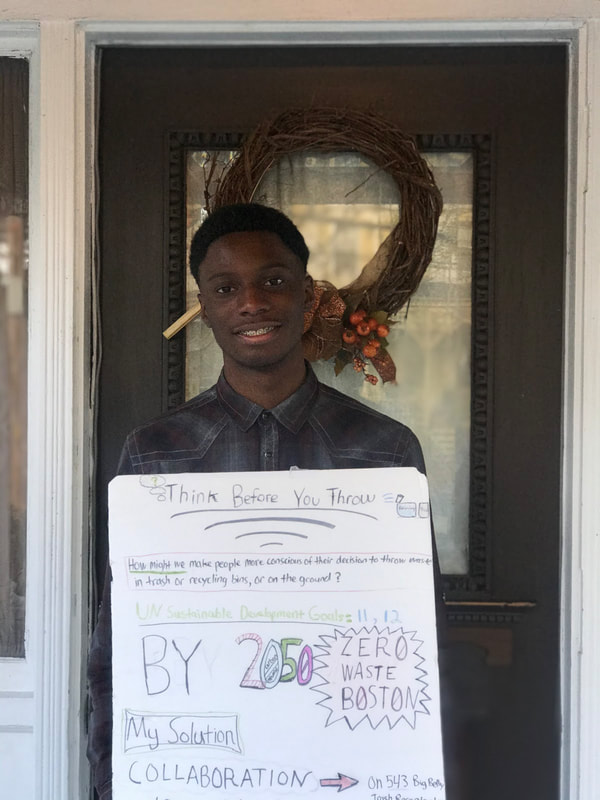
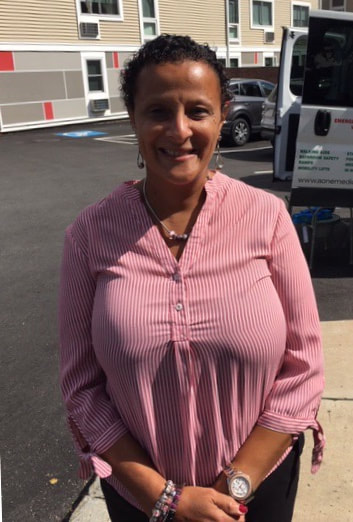
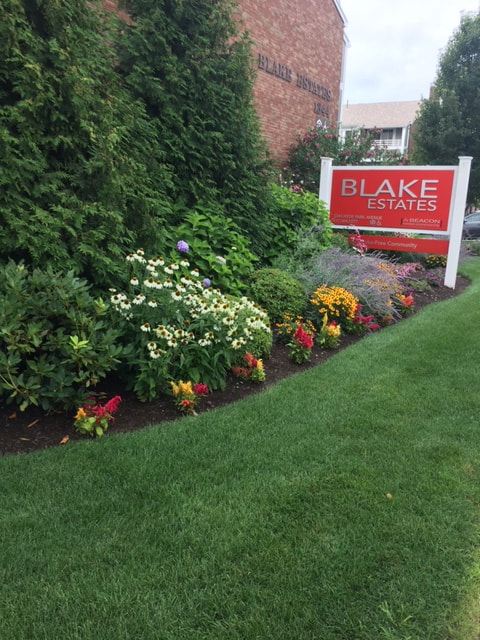

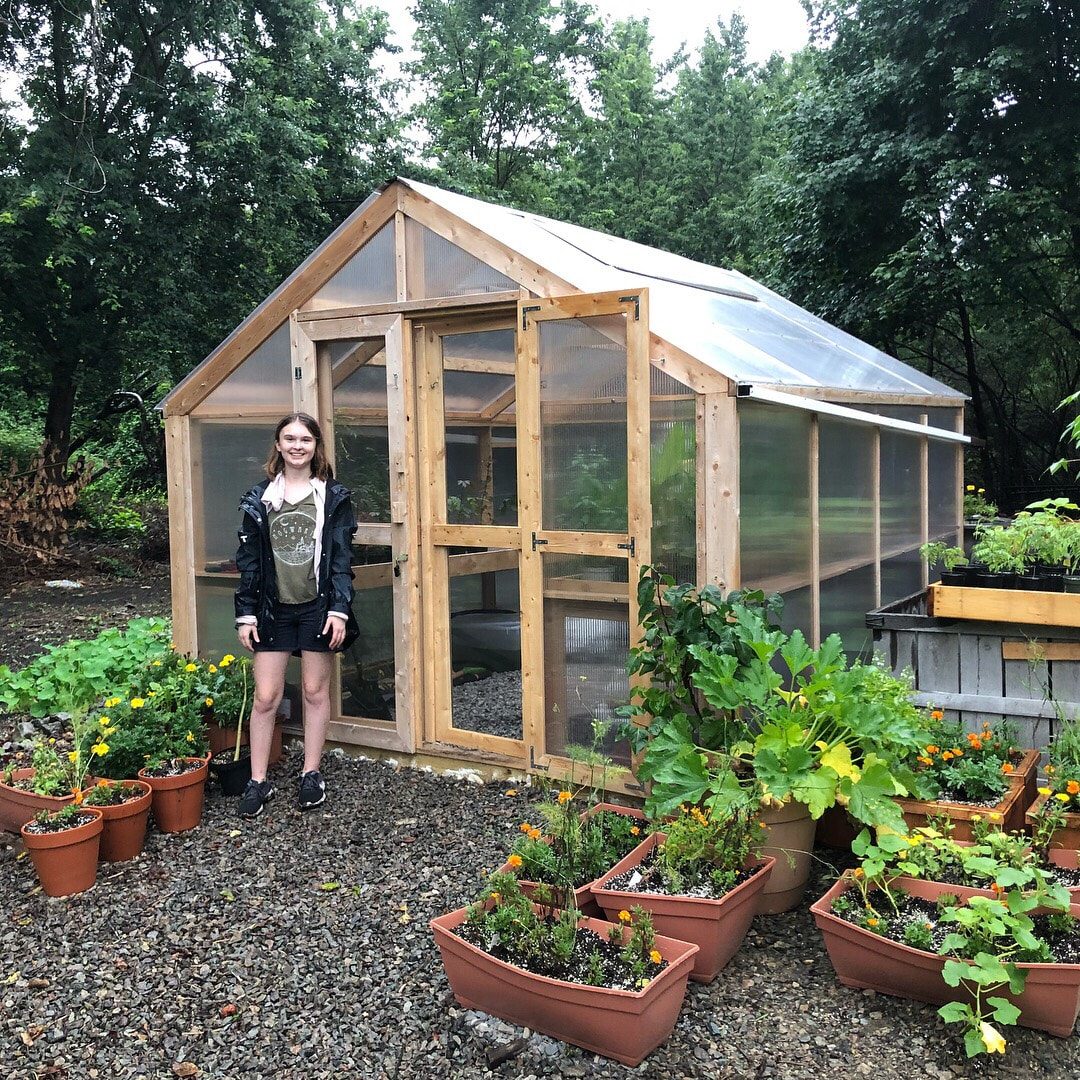
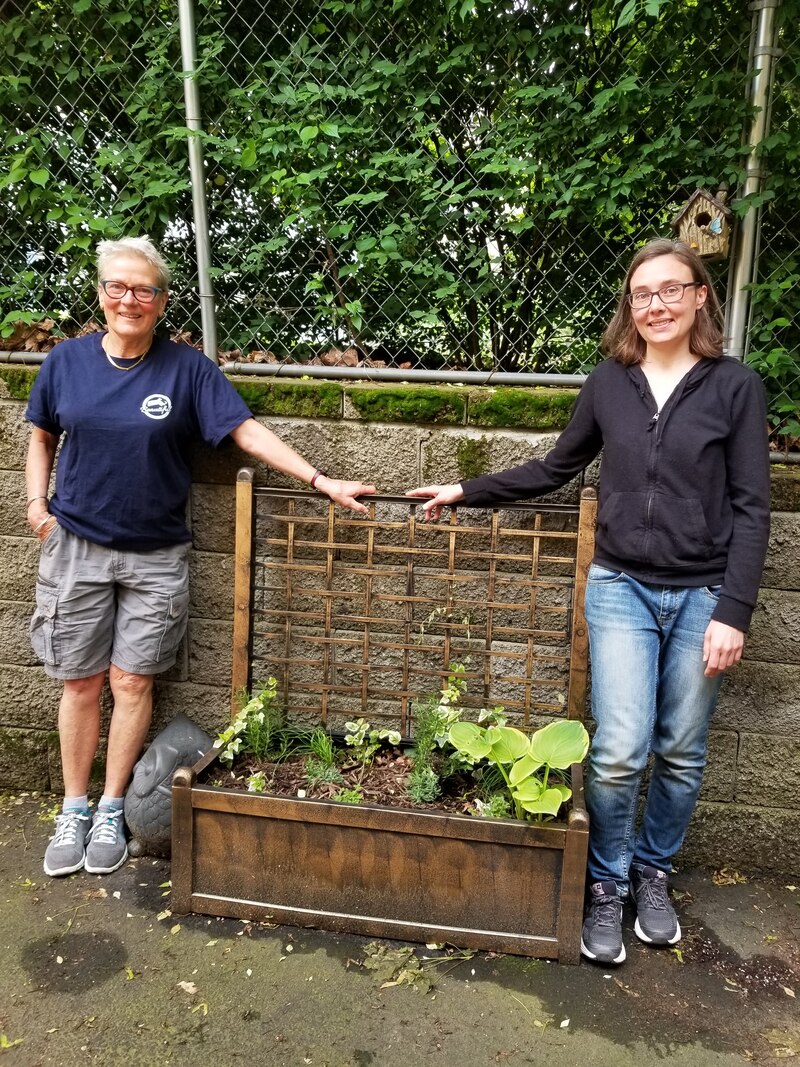
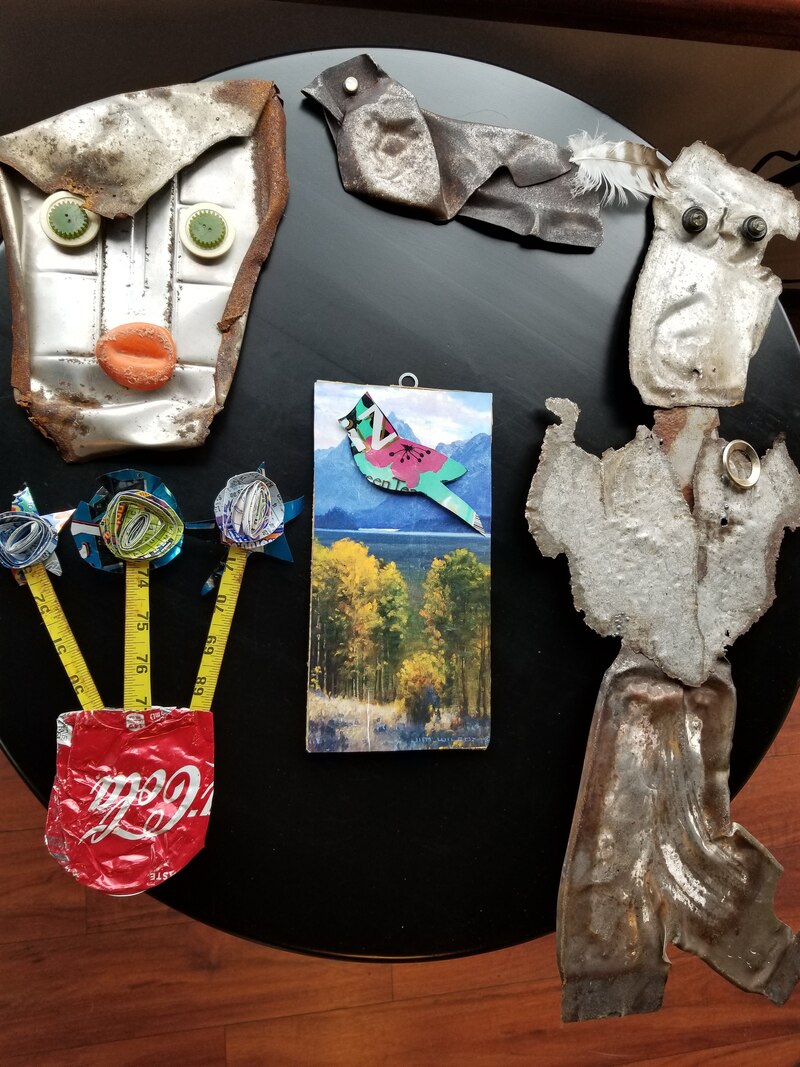
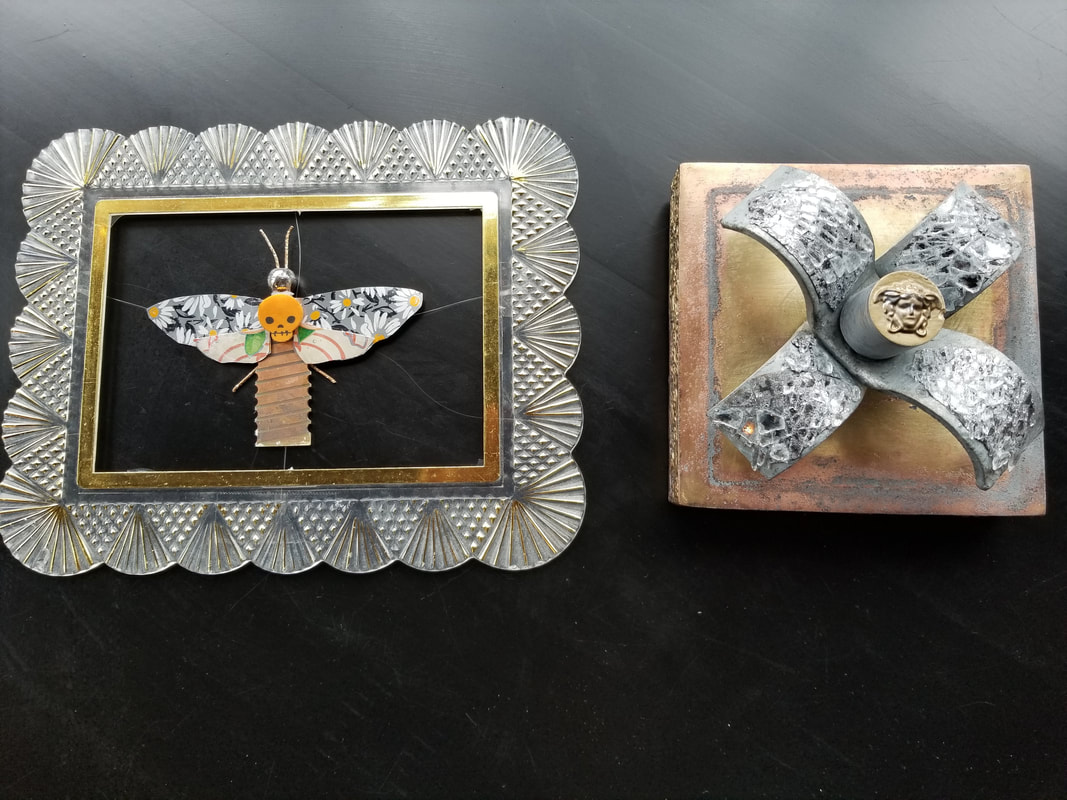
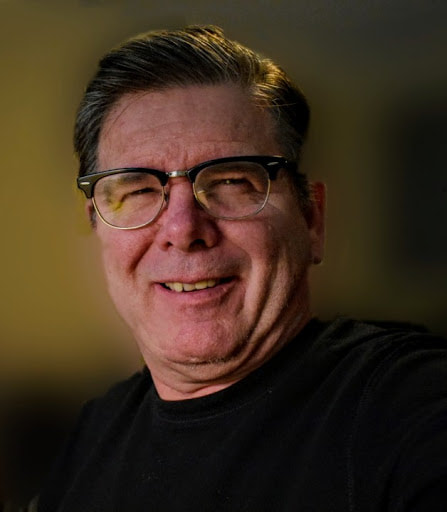
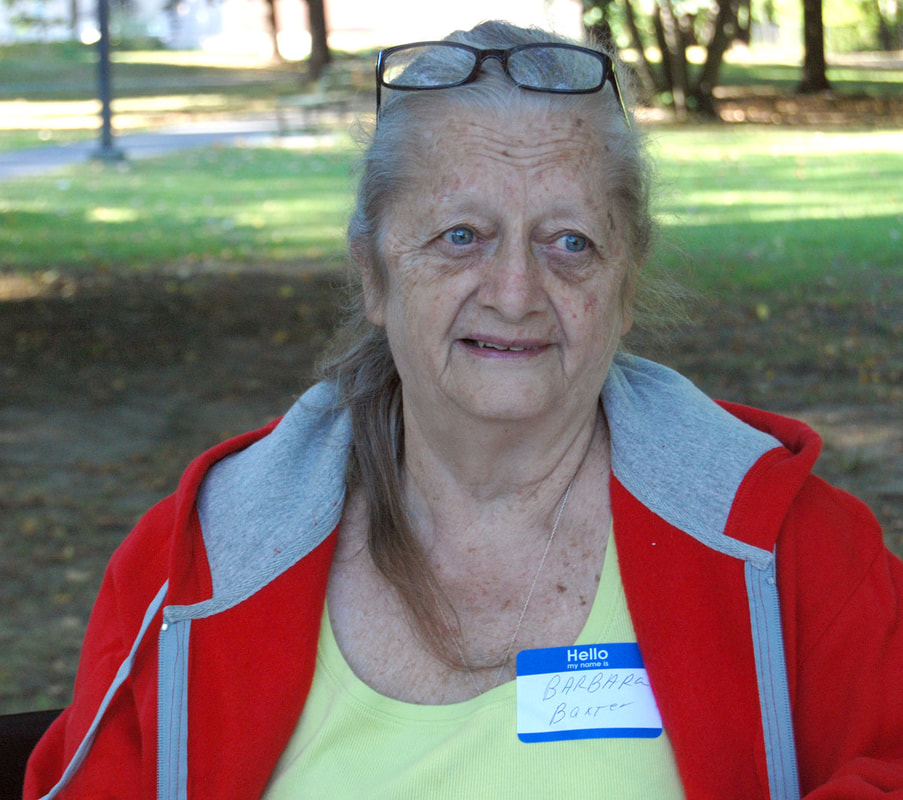
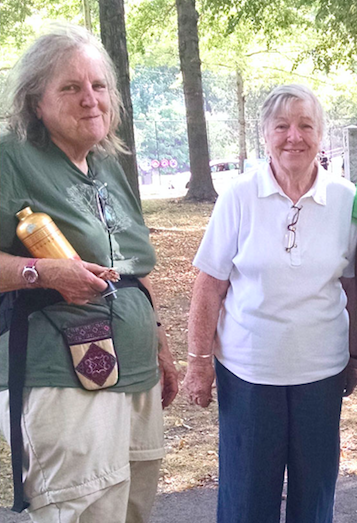
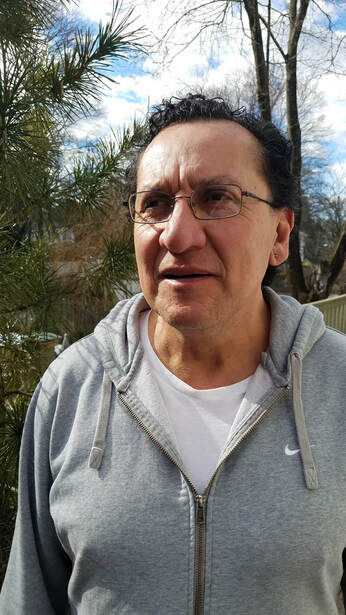
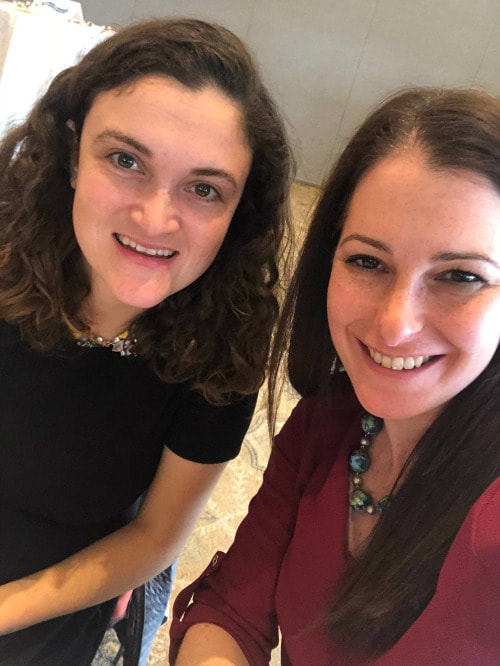
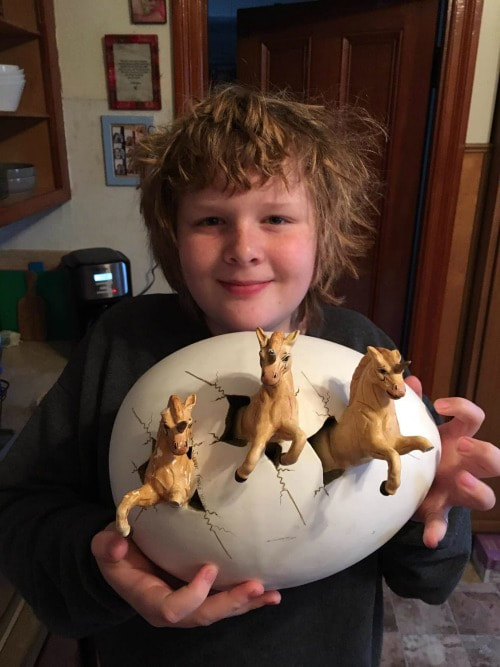
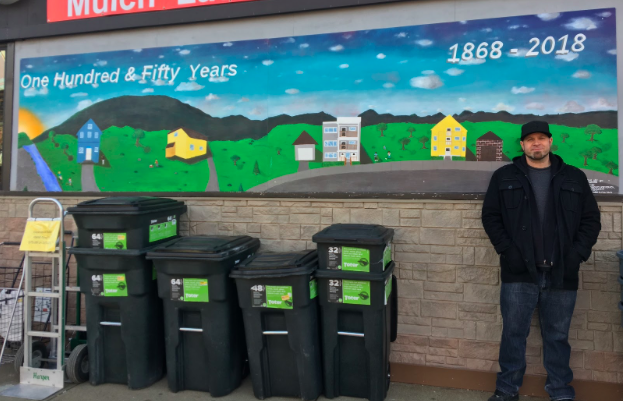
 RSS Feed
RSS Feed